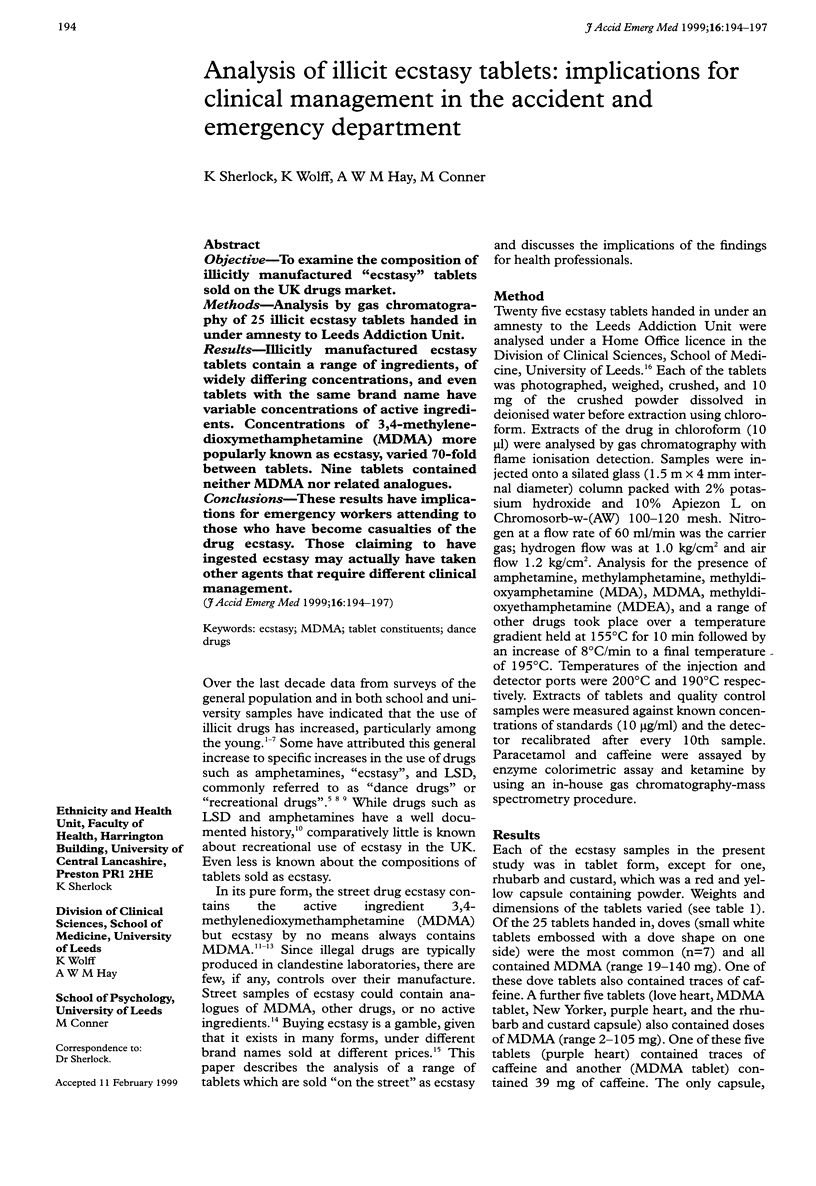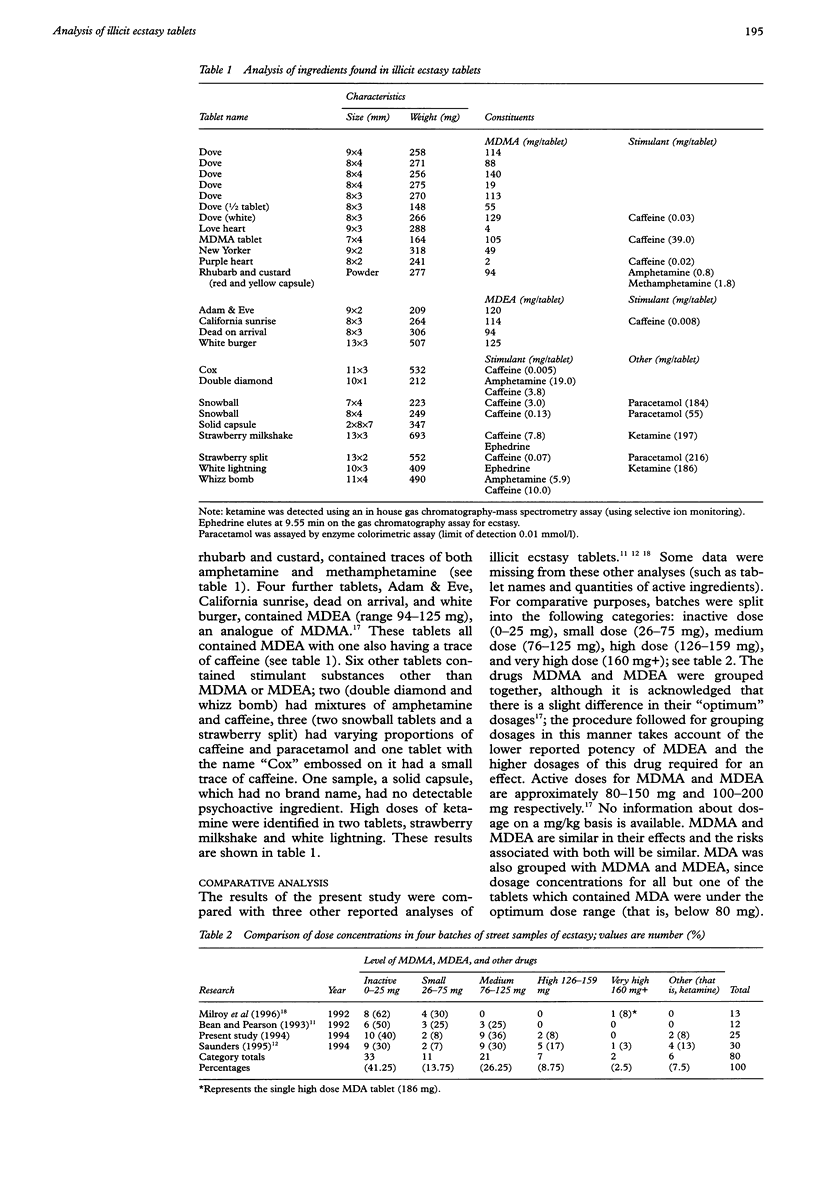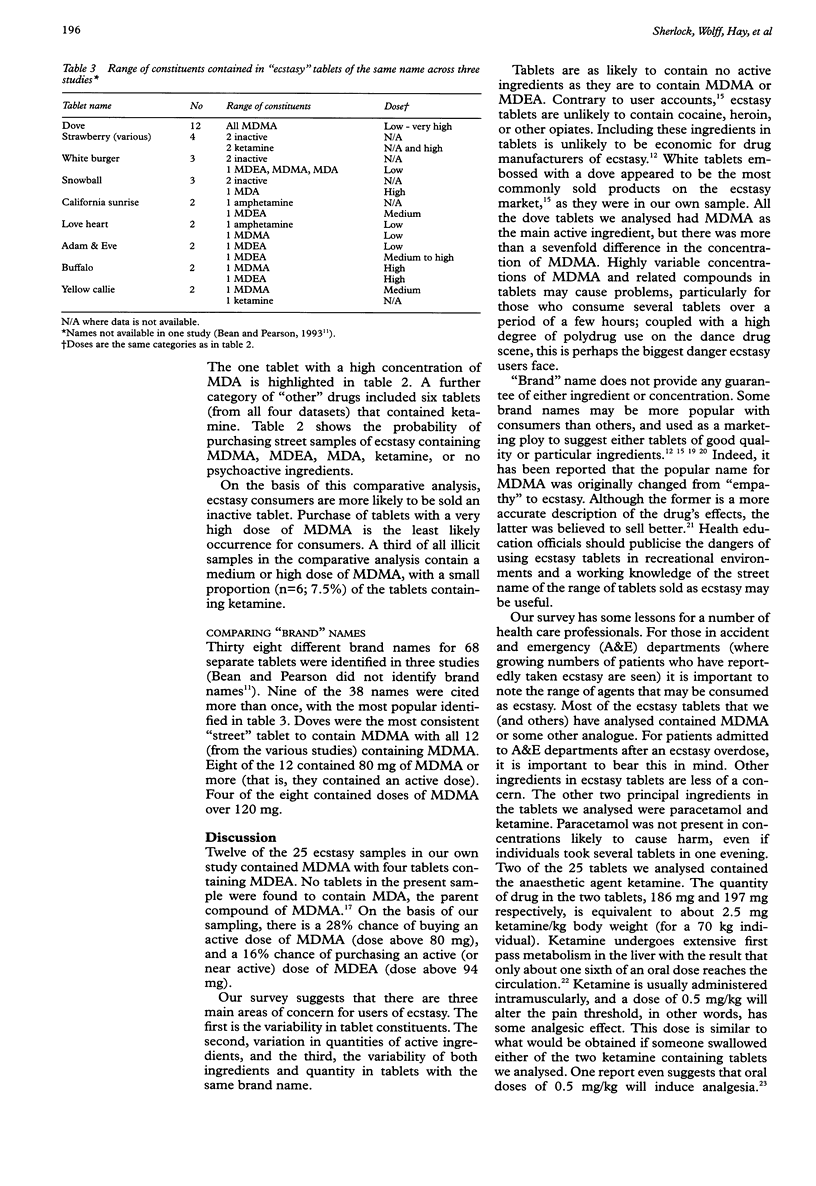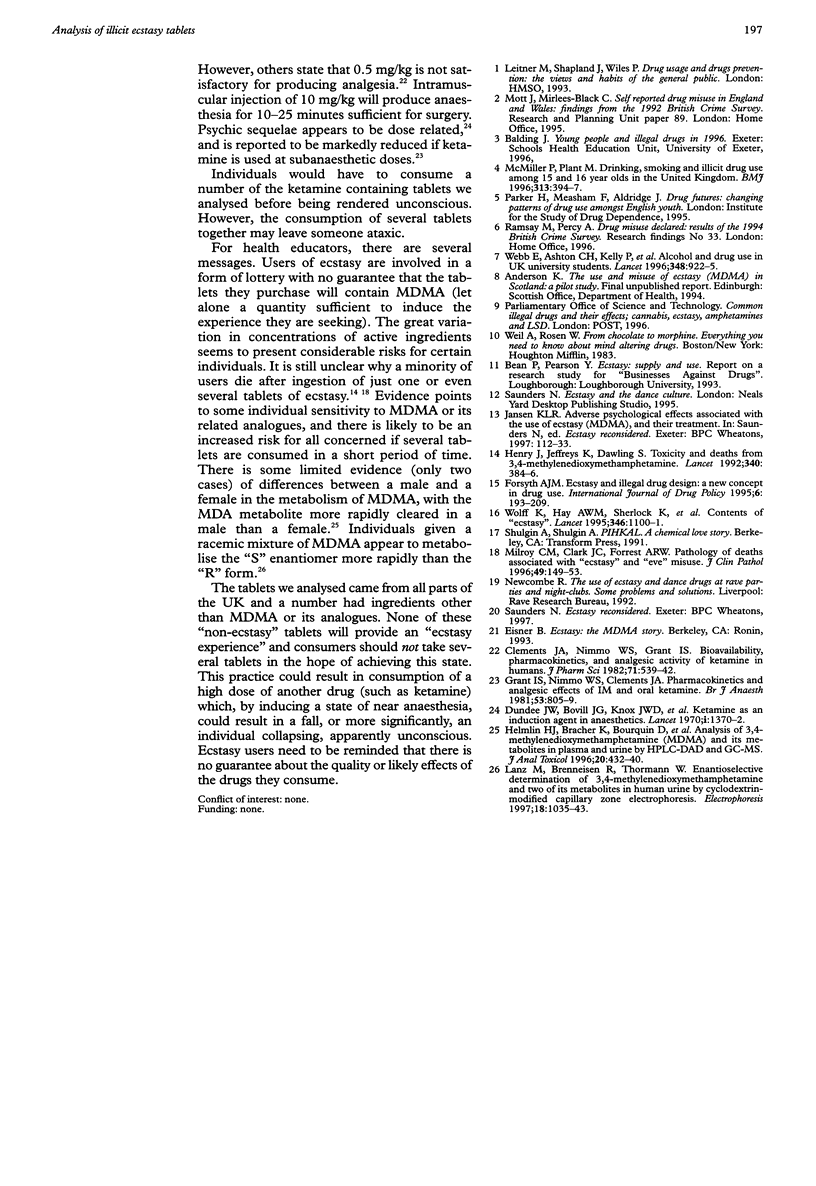Abstract
OBJECTIVE: To examine the composition of illicitly manufactured "ecstasy" tablets sold on the UK drugs market. METHODS: Analysis by gas chromatography of 25 illicit ecstasy tablets handed in under amnesty to Leeds Addiction Unit. RESULTS: Illicitly manufactured ecstasy tablets contain a range of ingredients, of widely differing concentrations, and even tablets with the same brand name have variable concentrations of active ingredients. Concentrations of 3,4-methylenedioxymethamphetamine (MDMA) more popularly known as ecstasy, varied 70-fold between tablets. Nine tablets contained neither MDMA nor related analogues. CONCLUSIONS: These results have implications for emergency workers attending to those who have become casualties of the drug ecstasy. Those claiming to have ingested ecstasy may actually have taken other agents that require different clinical management.
Full text
PDF



Selected References
These references are in PubMed. This may not be the complete list of references from this article.
- Clements J. A., Nimmo W. S., Grant I. S. Bioavailability, pharmacokinetics, and analgesic activity of ketamine in humans. J Pharm Sci. 1982 May;71(5):539–542. doi: 10.1002/jps.2600710516. [DOI] [PubMed] [Google Scholar]
- Dundee J. W., Knox J. W., Black G. W., Moore J., Pandit S. K., Bovill J., Clarke R. S., Love S. H., Elliott J., Coppel D. L. Ketamine as an induction agent in anaesthetics. Lancet. 1970 Jun 27;1(7661):1370–1371. doi: 10.1016/s0140-6736(70)91273-0. [DOI] [PubMed] [Google Scholar]
- Grant I. S., Nimmo W. S., Clements J. A. Pharmacokinetics and analgesic effects of i.m. and oral ketamine. Br J Anaesth. 1981 Aug;53(8):805–810. doi: 10.1093/bja/53.8.805. [DOI] [PubMed] [Google Scholar]
- Helmlin H. J., Bracher K., Bourquin D., Vonlanthen D., Brenneisen R. Analysis of 3,4-methylenedioxymethamphetamine (MDMA) and its metabolites in plasma and urine by HPLC-DAD and GC-MS. J Anal Toxicol. 1996 Oct;20(6):432–440. doi: 10.1093/jat/20.6.432. [DOI] [PubMed] [Google Scholar]
- Henry J. A., Jeffreys K. J., Dawling S. Toxicity and deaths from 3,4-methylenedioxymethamphetamine ("ecstasy") Lancet. 1992 Aug 15;340(8816):384–387. doi: 10.1016/0140-6736(92)91469-o. [DOI] [PubMed] [Google Scholar]
- Lanz M., Brenneisen R., Thormann W. Enantioselective determination of 3,4-methylene-dioxymethamphetamine and two of its metabolites in human urine by cyclodextrin-modified capillary zone electrophoresis. Electrophoresis. 1997 Jun;18(6):1035–1043. doi: 10.1002/elps.1150180628. [DOI] [PubMed] [Google Scholar]
- Miller P. M., Plant M. Drinking, smoking, and illicit drug use among 15 and 16 year olds in the United Kingdom. BMJ. 1996 Aug 17;313(7054):394–397. doi: 10.1136/bmj.313.7054.394. [DOI] [PMC free article] [PubMed] [Google Scholar]
- Milroy C. M., Clark J. C., Forrest A. R. Pathology of deaths associated with "ecstasy" and "eve" misuse. J Clin Pathol. 1996 Feb;49(2):149–153. doi: 10.1136/jcp.49.2.149. [DOI] [PMC free article] [PubMed] [Google Scholar]
- Webb E., Ashton C. H., Kelly P., Kamali F. Alcohol and drug use in UK university students. Lancet. 1996 Oct 5;348(9032):922–925. doi: 10.1016/s0140-6736(96)03410-1. [DOI] [PubMed] [Google Scholar]


